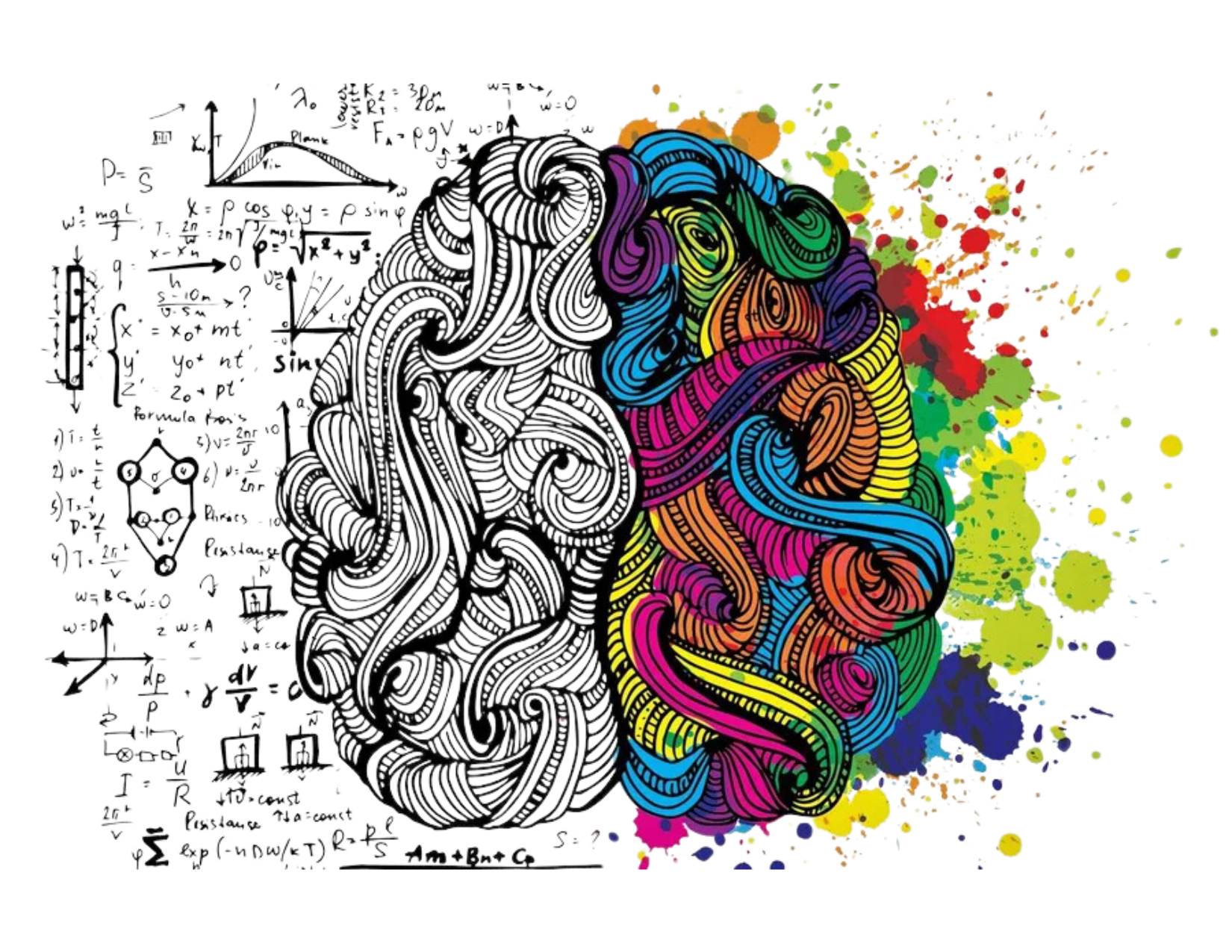Brain Regions That Bridge, Filter, & Regulate (Part 3)
Our brain is a marvel of interconnected systems, with each region playing a unique role in how we think, feel, and navigate the world. While previous posts explored the cerebrum, limbic system, and cranial nerves, this post delves into the regions that bridge, filter, and regulate our sensory, emotional, and physical experiences. Let’s explore the thalamus, insular cortex, corpus callosum, brainstem, and reticular activating system (RAS)—and learn how to support these vital areas for a balanced and harmonious life.
THALAMUS: THE SENSORY RELAY
The thalamus acts as the brain’s sensory control center, filtering and prioritizing sensory input (except smell, which bypasses the thalamus) before sending it to the appropriate brain regions. Think of it as the brain’s air traffic controller, ensuring sensory information gets where it needs to go smoothly.
Connection to the Body: It helps us focus on relevant stimuli while ignoring distractions, enabling us to navigate complex environments. The thalamus is what allows you to focus and work in a coffee shop, allowing that environment to become “ambience” rather than distracting.
When Dysregulated: To continue the coffee shop analogy if your thalamus is overactive, your thalamus may struggle to filter out background stimuli, making everything feel equally important. Every sound is a distraction—the clinking of cups, snippets of conversations, the hiss of the espresso machine. Your brain can't tune out the “noise,” leading to sensory overload, irritability, or difficulty concentrating.
If your thalamus is under active the coffee shop's environment could feel exhausting, overwhelming, or even draining. You might feel spaced out, unable to engage with your work, or fatigued by the sensory chaos because your brain isn’t prioritizing what to focus on.
Support:
Nature Time: Forest bathing, walks on the beach; these ground us and reconnect us to a gentler rhythm
Focus: Play with a visual or auditory “focus exercises,” like focusing on one piece of music or a single object in a busy environment.
Herbal allies: Nootropics like ginkgo biloba or gotu kola may enhance focus and circulation.
Craniosacral Therapy (CST): CST works by reducing tension and restoring natural rhythms in the brain and body, promoting harmony and integration. For the thalamus, CST can help relieve overstimulation, improve cerebrospinal fluid flow, and support sensory filtering.
INSULAR CORTEX: THE SEAT OF SELF-AWARENESS
The insular cortex is where the body meets the mind. This fascinating area processes interoception (awareness of internal body states), empathy, and emotional regulation while playing a role in autonomic functions like heart rate and digestion.
Think of the insular cortex as the body’s switchboard, where signals about internal states like hunger, thirst, or emotional shifts are routed to create awareness and action. However, stress can "cross the wires," making it harder to interpret these signals accurately. For instance, both hunger and thirst activate overlapping neural pathways in the insula, which can blur the distinction between the two. Cortisol, our main stress hormone, increases this sensitivity, often tricking us into thinking we’re hungry when we’re actually dehydrated.
Connection to the Body: This complex interaction between stress, hormones, and neural pathways is why dehydration or emotional stress can manifest as hunger cravings, particularly for sugary or fatty foods that provide quick energy. Ghrelin, the hunger hormone, can also contribute to this confusion when stress levels are high, making the insula a key player in how we experience and respond to internal needs.
When Dysregulated: Can contribute to feelings of disconnection from the body, heightened anxiety, or difficulty managing emotions.
Support:
Stay hydrated: Even mild dehydration (1-2%) can impact the insular (plus cognitive function, mood, and physical performance). A common rule of thumb is to drink half your body weight in ounces daily (e.g., a healthy 100lb person aims for 50oz of water).
Mindful eating: Slow down and tune into your body’s cues to discern between hunger, thirst, or stress-driven cravings.
Herbal allies: Lemon balm and schizandra can help promote emotional balance and stress resilience.
Craniosacral therapy: Facilitates deeper body awareness and relaxation by calming the nervous system and improving interoceptive sensitivity.
CORPUS CALLOSUM: THE COMMUNICATION BRIDGE
The corpus callosum connects the brain’s two hemispheres, facilitating the collaboration of logic and creativity. It’s the Golden Gate Bridge of the brain, creating balance and flow between left and right.
Connection to the Body: It allows for integration of logic (left hemisphere) and creativity (right hemisphere), enabling balanced decision-making and complex thought. Writing a story might use the left hemisphere for grammar and structure and the right hemisphere for creativity and emotional tone.
When Dysregulated: If the corpus callosum’s integration isn’t functioning optimally (e.g., due to stress, trauma, or heightened emotional states), the two hemispheres may pull in opposite directions. This tug-of-war manifests as knowing logically what you should do but feeling emotionally compelled to do something else. "I know having lunch with my ex is probably a bad idea (logic), but I'm emotionally drawn to the drama and potential chaos (emotion)." Dysregulation can also manifest as difficulty processing emotions logically or expressing creative ideas in a structured way. Like when you’re writing a tough email and can’t seem to get your thoughts and words down.
Support:
Cross-body movements: Tai chi, dancing, playing an instrument or sport encourage hemispheric integration.
Create: Writing poetry, solving puzzles, or designing something new.
Journaling: about what we “know” versus what we “feel” can help us bridge the gap and find resolution.
Herbal allies: Medicinal mushrooms like lion’s mane may support neural connectivity.
Craniosacral Therapy: Promotes hemispheric balance and enhancing communication pathways. It can support the integration between body wisdom and logic.
BRAINSTEM: THE VITAL FUNCTIONS REGULATOR
The brainstem is the body’s autopilot, managing vital functions like breathing, heart rate, and sleep cycles while acting as a conduit between the brain and spinal cord. This foundational structure is divided into three main parts—midbrain, pons, and medulla oblongata—each playing a unique role in keeping you alive and functional.
Midbrain: The Sensory Coordinator
The midbrain connects the brainstem to higher brain regions like the cerebrum and thalamus. It helps process visual and auditory input, allowing you to react to sudden sights or sounds, like hitting the brakes when you see brake lights ahead. It’s also involved in motor control and the release of dopamine, which regulates motivation and movement.
Pons: The Relay Station
The pons is the brainstem’s communication hub, connecting the cerebrum to the cerebellum. It’s also responsible for regulating breathing patterns and coordinating facial movements. This is where signals for facial expressions, chewing, and eye movement are processed. If you’ve ever yawned and felt your entire face shift, you’ve experienced the pons in action.
Medulla Oblongata: The Life Support Center
The medulla is the control room for involuntary functions like heartbeat, blood pressure, and reflexive actions such as swallowing, coughing, and sneezing. It also works with the pons to manage breathing rhythms. Without the medulla, life would cease—it’s the literal heartbeat of your body.
Connection to the Body: Together, these three parts keep you alive and steady so your higher brain regions (your cerebrum, limbic system, etc.) can focus on complex tasks and your human journey.
When Dysregulated: This can manifest as irregular heartbeat, chronic cough, sleep disturbances, or chronic fatigue. It’s also a key player in conditions like anxiety, where the fight-or-flight response becomes overactive.
Support:
The Basics: Prioritize rest (sleep hygiene), hydration, and breathwork.
Vagus nerve stimulation: Techniques like “horse breath”, humming, singing or gargling activate the vagus nerve and can balance the autonomic nervous system.
Herbal allies: Adaptogens like rhodiola or reishi or nervines like valerian root may promote balance and good sleep.
Craniosacral Therapy: CST can release tension around the brainstem, improving its function and overall nervous system harmony. I’ve seen remarkable results with heart rate regulation, deeper breathing, and even relief for patients with chronic coughs.
RETICULAR ACTIVATING SYSTEM (RAS): THE ALERTNESS GATEKEEPER
The RAS is a network within the brainstem that regulates wakefulness, attention, and the ability to filter stimuli. It acts as the brain's "on switch," determining whether we're awake, asleep, or somewhere in between.
Evolutionarily the brainstem came before the thalamus, so you could say this was the first sensory filtration system we had. Now, the RAS decides what sensory information deserves attention and relays this to the thalamus for further processing. They work together.
Connection to the Body: Helps determine what’s important and what can be ignored, influencing focus and energy levels. The RAS provides the thalamus with cues on what stimuli to prioritize based on relevance. For example, if you're focusing on a conversation in a noisy room, the RAS ensures the thalamus amplifies the voice you're listening to while filtering out background noise. Likewise, when we’re sleeping the RAS dampens sensory input allowing the thalamus to promote rest by reducing conscious awareness (unless, of course, cortisol (stress) is heightening the thalamus’s sensitivity). And it’s what jolts you to either wake up or hit the snooze button when you’re morning alarm goes off.
When Dysregulated: Overactivity can cause hypervigilance or overwhelm, while underactivity may result in fatigue or difficulty concentrating. Likewise, when there’s a disruption between the RAS and thalamus, sensory input can become overwhelming, as in conditions like PSTD or autism spectrum disorder. This can also contribute in conditions like ADHD, which can manifest as both hyper focused or an inability to focus at all.
Support:
Journaling: Simply writing or speaking out loud slows down our thoughts, and helps us reset our nervous system.
Nature Time: Connecting with nature reconnects us to our basic rhythms.
Single-Tasking: Make a list of what you need to accomplish, and focus on each task, one at a time.
Herbal allies: Herbs like holy basil or green tea (L-theanine) may help modulate energy.
Craniosacral Therapy: Can calm the RAS by supporting the brainstem and cerebrospinal fluid flow, enhancing focus and relaxation. Plus, CST can encourage integration between body systems, including the cross talk between the RAS and thalamus.
Understanding these essential brain regions reveals the intricacy and beauty of how we process the world around us. As we continue our journey through the nervous system, we’ll delve into the spinal cord—our brain’s dynamic partner in movement, sensation, and communication. In upcoming posts, we’ll explore how the nervous system responds to trauma and the profound ways CST can support healing across the body, mind, and spirit.
What's coming:
Brain Regions and Their Roles in Thought, Mood, and Movement, Part 1
Brain Regions, Part 2: The Limbic System
Brain Regions, Part 3
How Trauma Impacts the Brain: Reclaiming Sovereignty with Self-Compassion
Craniosacral Therapy - Enhancing Nervous System Balance
A Reminder on Herbal Remedies
While herbs are natural, they can be just as potent as pharmaceuticals—and sometimes carry their own contraindications and interactions. For instance, rhodiola is contraindicated in bipolar disorder due to its stimulating effects, and St. John’s Wort, wis a CYP450 inducer, meaning it can “speed up” the metabolism of other drugs. Please keep this in mind when choosing natural remedies to support your health. It’s always best to consult with a professional herbalist or integrative provider who can guide you on your natural health journey, ensuring safety and efficacy tailored to your individual needs.
Are there specific areas of the nervous system you're curious about? Drop a comment below, and I'll be sure to cover them as we journey through this incredible body-wide network!




